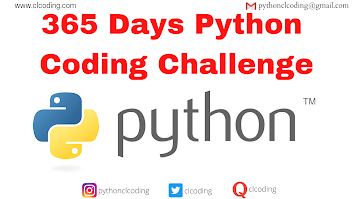Hands-On APIs for AI and Data Science: Python Development with FastAPI
As artificial intelligence (AI) and data science solutions become increasingly critical to modern businesses, the need for fast, scalable, and easy-to-deploy APIs has never been greater. APIs allow AI and data models to connect with real-world applications — from mobile apps to web dashboards — making them accessible to users and systems across the globe.
"Hands-On APIs for AI and Data Science: Python Development with FastAPI" serves as the ultimate guide for building production-ready APIs quickly and efficiently. By combining the power of Python, the speed of FastAPI, and the precision of AI models, this book equips developers, data scientists, and machine learning engineers to expose their models and data pipelines to the world in a robust and scalable way.
Why FastAPI?
In the world of web frameworks, FastAPI has emerged as a true game-changer. Built on top of Starlette for the web parts and Pydantic for the data validation parts, FastAPI offers:
Blazing Speed: One of the fastest frameworks thanks to asynchronous capabilities.
Automatic API Documentation: Generates interactive Swagger and ReDoc docs without extra code.
Type Hints and Validation: Deep integration with Python type hints, ensuring fewer bugs and better developer experience.
Easy Integration with AI/ML Pipelines: Built-in support for JSON serialization, async requests, background tasks, and more — essential for real-world AI serving.
"Hands-On APIs for AI and Data Science" teaches you not just how to use FastAPI, but how to optimize it specifically for data science and machine learning applications.
What This Book Covers
"Hands-On APIs for AI and Data Science" is structured to take you from basics to advanced deployment strategies. Here’s a breakdown of the key areas covered:
1. Fundamentals of APIs and FastAPI
The book starts with the core concepts behind APIs: what they are, why they matter, and how they serve as a bridge between users and AI models.
It introduces the basics of FastAPI, including setting up your environment, creating your first endpoints, understanding routing, and handling different types of requests (GET, POST, PUT, DELETE).
Setting up Python virtual environments
Building your first Hello World API
Sending and receiving JSON data
2. Data Validation and Serialization with Pydantic
One of FastAPI’s secret weapons is Pydantic, which ensures that the data coming into your API is exactly what you expect.
The book dives deep into using Pydantic models for input validation, output schemas, and error handling, ensuring your APIs are safe, predictable, and user-friendly.
Topics include:
Defining request and response models
Automatic data parsing and validation
Handling nested and complex data structures
3. Connecting AI and Data Science Models
This is where the book shines: showing how to take a trained ML model (like a scikit-learn, TensorFlow, or PyTorch model) and expose it through a FastAPI endpoint.
You will build endpoints where users can submit input data and receive predictions in real time.
Real-world examples include:
Serving a spam detection model
Deploying a computer vision image classifier
Predicting house prices from structured data
4. Handling Files, Images, and Large Data
Many data science applications involve uploading images, CSV files, or large datasets.
The book walks you through handling file uploads securely and efficiently, and teaches techniques like background tasks for long-running operations (like large file processing).
Learn how to:
Accept image uploads for prediction
Parse uploaded CSV files
Perform background processing for heavy workloads
5. Authentication, Authorization, and API Security
Security is a major concern when exposing models to the public.
The book covers best practices for authentication (e.g., OAuth2, API Keys, JWT tokens) and authorization to protect your APIs.
Topics include:
Implementing token-based authentication
Securing endpoints
User management basics
6. Building Real-Time APIs with WebSockets
For applications like real-time monitoring, chatbots, or dynamic dashboards, WebSockets are a powerful tool.
This book introduces you to building real-time, bidirectional communication channels in FastAPI, enhancing your AI applications.
7. Testing and Debugging APIs
A solid API is not only functional but also well-tested.
You’ll learn how to write automated tests for your endpoints using Python's pytest and FastAPI’s built-in testing utilities, ensuring reliability before deployment.
8. Deployment Strategies
Finally, you’ll explore how to move from local development to production.
The book guides you through deployment best practices, including setting up Uvicorn, Gunicorn, Docker containers, and even deploying on cloud platforms like AWS, Azure, and GCP.
Deployment topics include:
Running APIs with Uvicorn/Gunicorn
Dockerizing your FastAPI application
Using Nginx as a reverse proxy
Basic cloud deployment workflows
Who Should Read This Book?
- Data Scientists who want to expose models to end users or integrate predictions into applications.
- Machine Learning Engineers looking for scalable, production-ready deployment methods.
- Backend Developers who want to leverage Python for building AI-driven APIs.
- Researchers needing to share ML models easily with collaborators or stakeholders.
- Students and Enthusiasts eager to learn about modern API development and AI integration.
- No prior web development experience is strictly necessary — the book builds from beginner to intermediate concepts seamlessly.
Key Benefits After Reading This Book
- Build production-ready APIs in Python with modern best practices
- Seamlessly serve AI models as real-time web services
- Secure, test, and deploy your APIs with confidence
- Understand async programming, background tasks, and WebSockets
- Create scalable and efficient data science systems accessible to users and applications
Hard Copy : Hands-On APIs for AI and Data Science: Python Development with FastAPI
Kindle : Hands-On APIs for AI and Data Science: Python Development with FastAPI
Conclusion: Bring Your AI Models to Life
Building great AI models is only half the battle — deploying them for real-world use is where the real value lies.
"Hands-On APIs for AI and Data Science" offers a step-by-step guide to making your AI models accessible, secure, and scalable via FastAPI — one of the fastest-growing frameworks in the Python ecosystem.
If you are serious about taking your machine learning, AI, or data science skills to the next level, this book is your roadmap to doing just that — with speed, clarity, and professional excellence.
Don’t just build models — build products that people can actually use.











.png)






.png)
























0 Comments:
Post a Comment